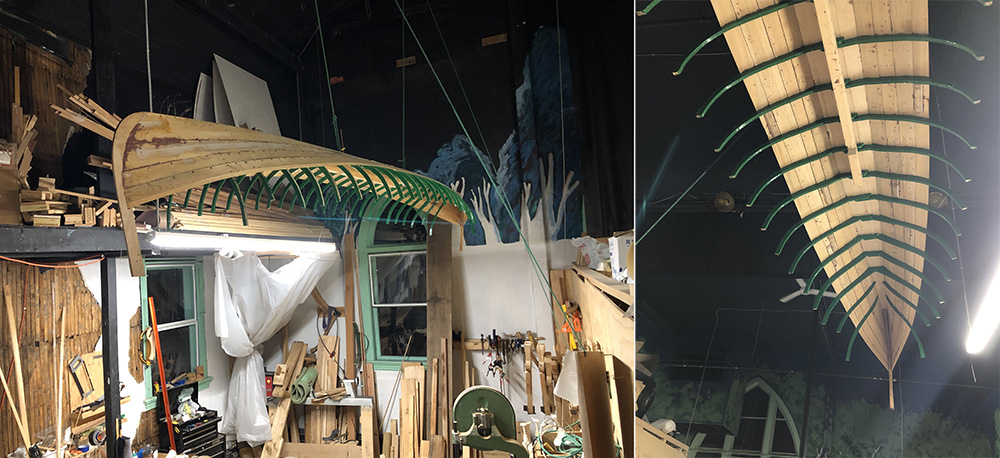
Building the Adirondack Guideboat
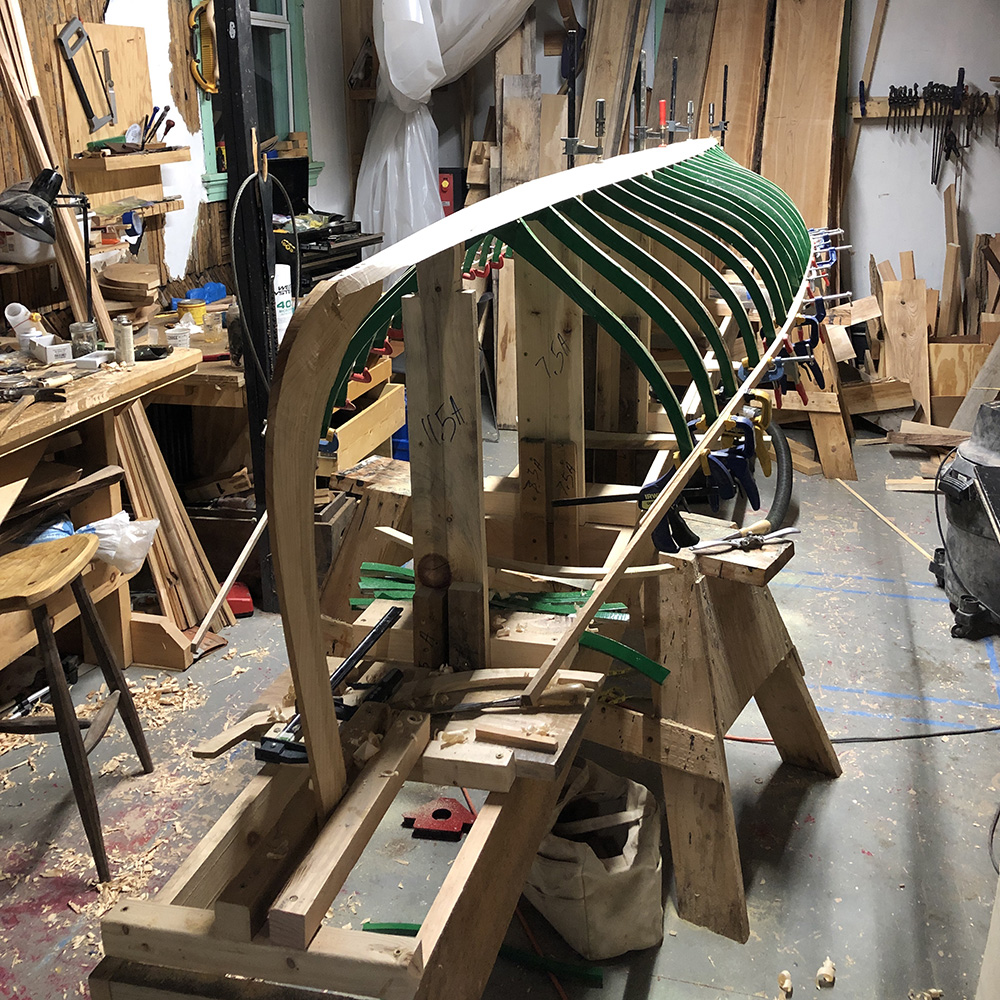
Resident Artisan Boatbuilder Josh Tolkan gets in the zone in an Adirondack Guideboat build. Read about it in his new blogpost.
Hi North House Blog Readers!
It has been a while since I have written and I am sorry. I hope you didn’t miss me. I’ve had a great year! There is much to look back on. The second half of the year had a lot of great projects. I built a collection of sea chests that came out very nicely and crafted two giant 16 foot long York Boat Oars for a museum in Alberta, Canada. I taught some classes, took a class, and did some campus demonstrations. I also spent a good amount of time making tools: special hand planes and the like. All of those were great learning experiences and accomplishments in their own right.
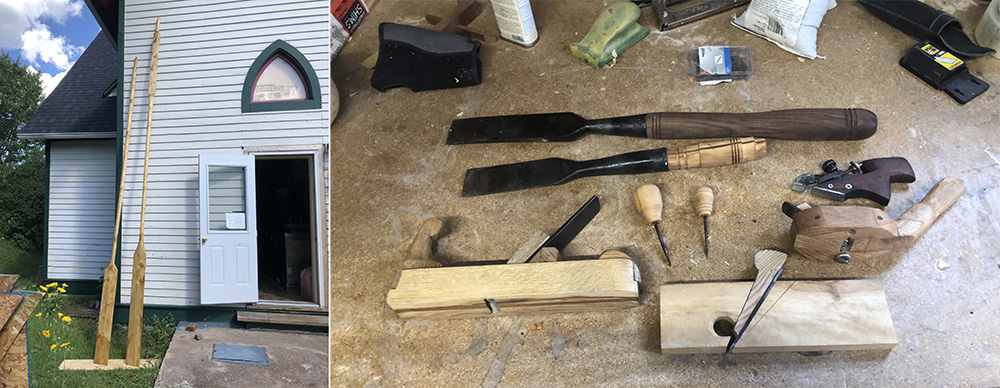
However, in the past 6 weeks or so I have finally been able to clear my schedule to work on the project I have been wanting to dedicate myself to for some time: an Adirondack Guideboat. I love tackling large ambitious projects, but I have a hard time focusing on them. To me they feel impossible to dabble on and work best when I can just focus on them and nothing else. I think this is because I do naturally like the feeling of finishing something. So, if there is a project I can complete in a day or two, I do that and make no progress on the big thing. I am sure many people deal with this. I have heard similar frustrations from friends in various fields.
Focusing is hard. When you can get there though it feels so good. Being in the zone the past few weeks planking the guideboat made me super happy. It's interesting to notice subtle things that change when you are in the zone. I have been wanting to listen to music more, paying less attention to distractions of social media, and suffering from less anxiety about the future than I often do. This holiday season for me it has been great to stay home and stay focused on this ambitious project. While I am super fortunate to have this time to focus on a project like this at a time when so many people are on edge for so many reasons, I’d recommend anyone to make time to focus on a passion project. When I used to work a desk job but was dabbling in boats as a hobby, I would sometimes take a week off around christmas and spend the entire week working on my boat project. It can lead to great happiness and confidence.

Anyway, I will tell you a little bit more about the guideboat project. I started this project with a mentor of mine, Josh Swan, who is a boat builder in Washburn, Wisconsin. Josh worked for a time at the Adirondack Museum in upstate New York where he learned many of the details of the famous guideboat. Guideboat frames are traditionally sawn from grown curves of spruce or tamarack roots. Josh also specializes in digging and sawing tamarack crooks, so the guideboat is a really natural thing to learn from him. Since the pandemic, finishing the guideboat with Josh has not been a possibility, so I am doing the best I can on my own, and I don't think I'm doing badly at all.
Guideboats were used for hunting and fishing trips in the Adirondack Mountains during the Victorian era. Guides would portage the boats and row the hunters around while they sat in a comfortable reclining caned chair. The lines of a guideboat are very reminiscent of a sturdy work boat, but have been scaled down into a lightweight camping vessel. Yet the boat retains its great seaworthiness and rowability from its fishing boat ancestors. The Guide Boat builders pushed the lightweight thing to the extreme. While the boats are built with dory-style lapstrake planking, builders would carve away the outer edge of each plank so the exterior appeared smooth, and they would similarly remove excess material on the inside of each plank so the plank sat snugly to the frame. All of this was done to save ounces of weight anywhere possible. Since I don't really see anyone carrying a 100+ pound boat through the woods these days, I am skipping some of these weight saving steps. I am also using a bit of modern mildly adhesive polyurethane sealant to help the boat stay dry without having to take up and swell shut. This adds weight, but again, I don't care. I think this will be a great row boat for a lake home or even for adventures on lake superior when conditions are just right.
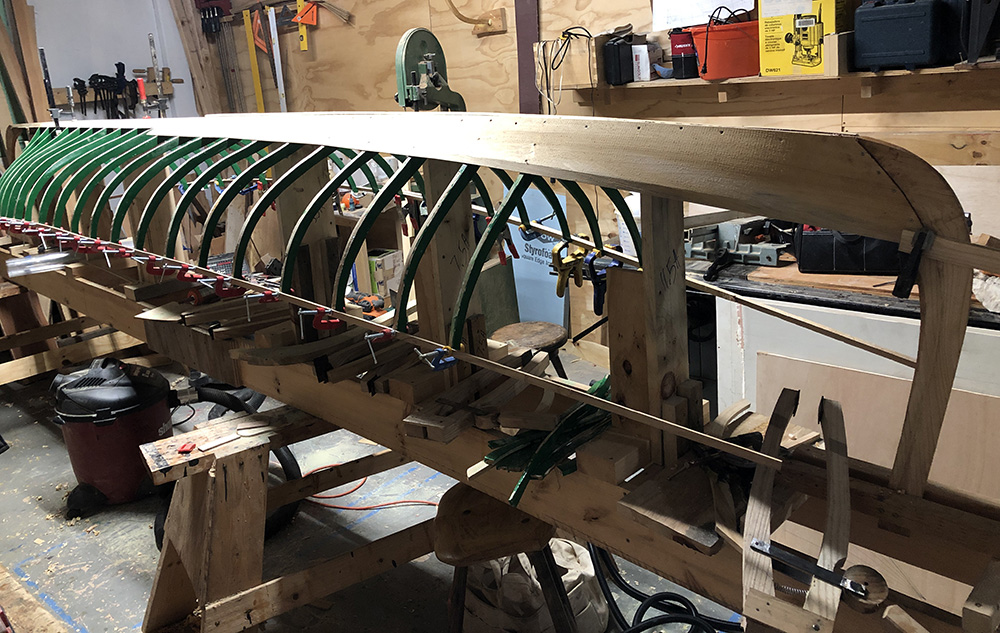
I’m planking this boat with locally sourced Northern white cedar that was cut many years ago and a logger has been stashing on his property. It is pretty nice stuff but has some checking I have to work with. While lapstrake planking looks a little like house siding, shaping and installing a plank is nothing like hanging siding. Each plank has its own unique slightly curved shape that must be patterned off the hull. The plank edges are determined by a lining-off process that is done at the start of planking to make sure each plank is a uniform width at every spot along the length of the boat. Each plank is beveled along the top and bottom edges to get the planks to fit snugly together. Planks are secured to each frame with tiny size 4 screws and then clench-nailed along their seams. The screw holes are pre-drilled, then the plank is removed so the adhesive sealant can be applied and then the plank is finally fastened to the frames and the adjoining planks.
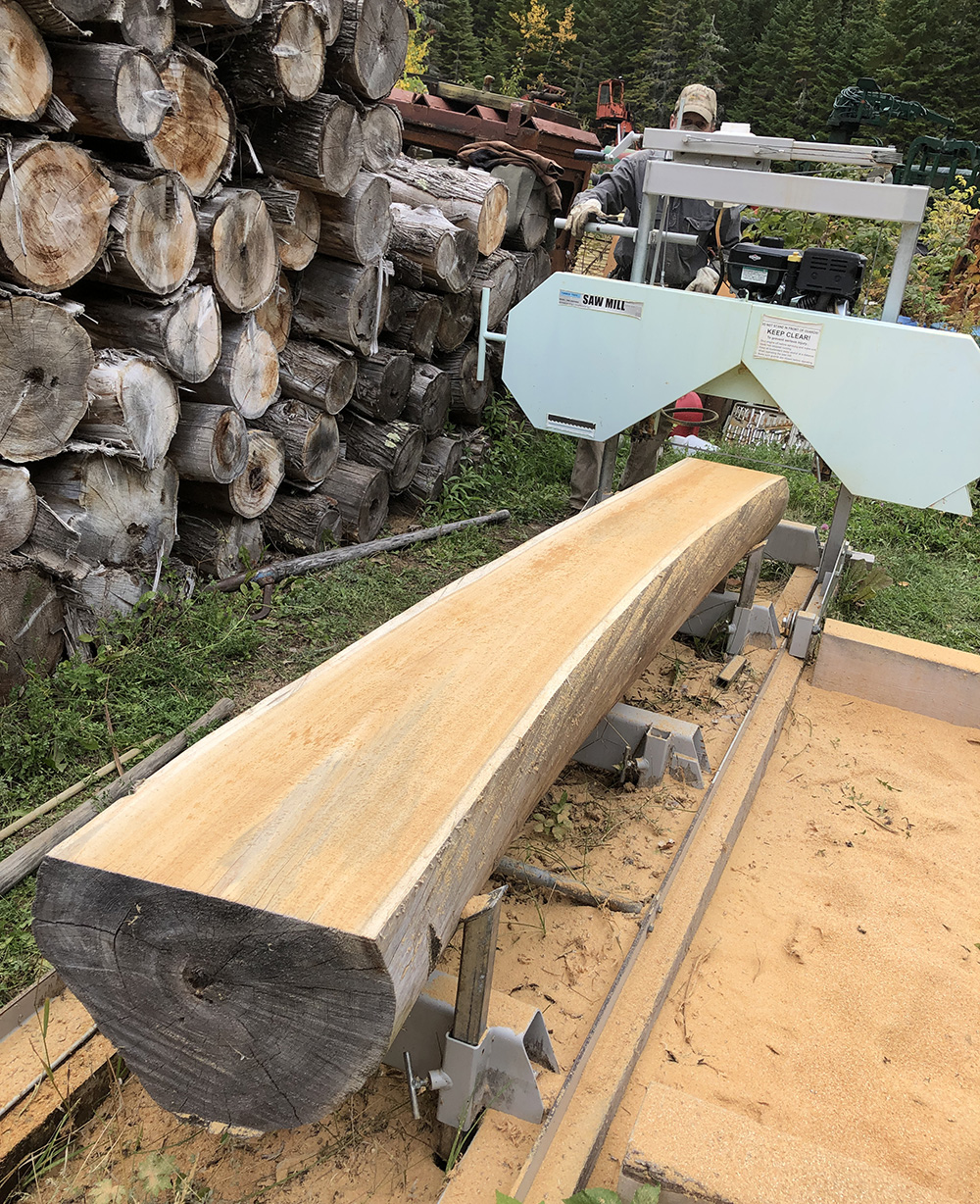
Well that is all for now. I have had a great month working on the guide boat. It has to go to storage for a while now whilst I do some income-generating work. I am going to build some nice new cabinets for my parents who are remodeling their family room and then will be working on restoring some wood canvas canoes for some clients. Let me know if you have a canoe you might like me to restore, or if you might want to buy this guideboat.
